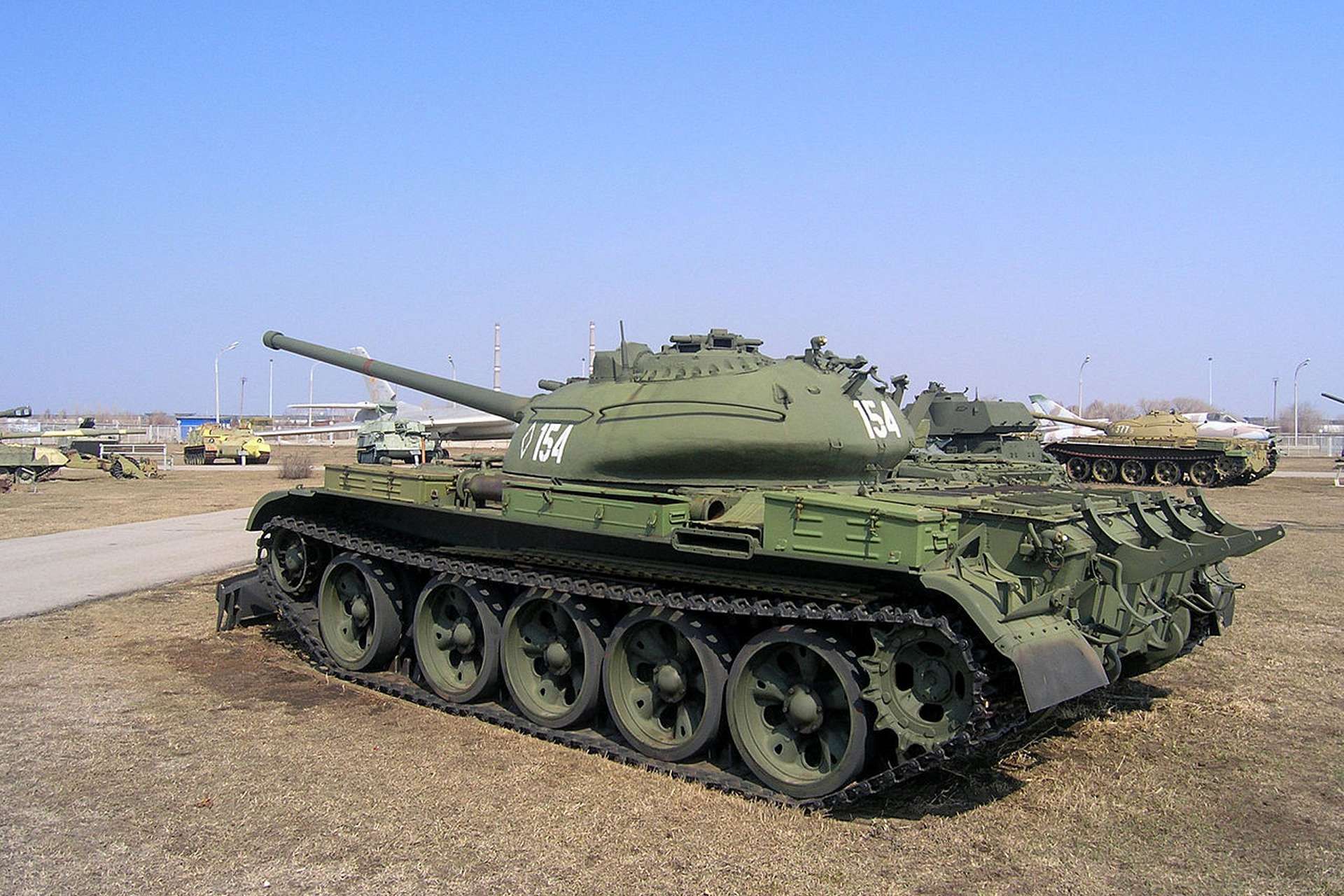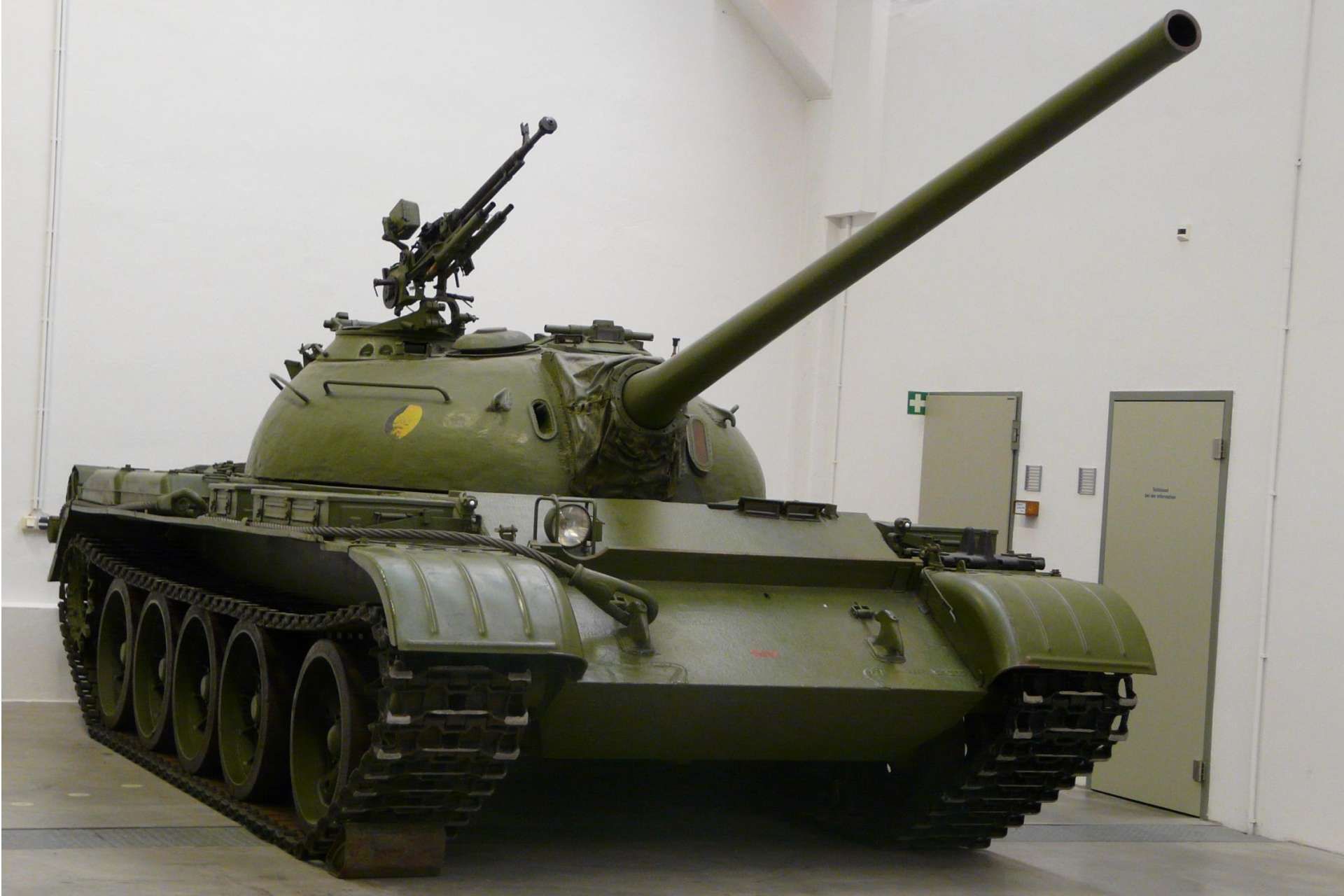Breaking News
Russia increasingly deploys WWII-era T-54 tanks in Ukraine after suffering major tank losses.
On July 16, 2024, BTVT reported that the Russian Armed Forces deployed a new batch of T-54 tanks from military storage, which were spotted at the Uzunovo station on the Paveletsky direction of the Moscow Railway. This deployment reflects Russia's increasing use of older military hardware to continue its conflict in Ukraine, where it has suffered substantial tank losses totaling 2,891 units as of July 22, 2024. These losses have included various modern tank models, leading to the use of T-54 tanks, originally developed in 1945.
Follow Army Recognition on Google News at this link

This deployment of T-54s tanks reflects Russia's increasing use of older military hardware to continue its conflict in Ukraine, where it has suffered substantial tank losses totaling 2,891 units as of July 22, 2024. (Picture source: BTVT)
To date, Russia has suffered substantial tank losses in the conflict with Ukraine, totaling 2,891 tanks. This figure includes 1,913 tanks destroyed, 155 damaged, 289 abandoned, and 534 captured. Among these, the T-72 series has experienced the highest losses, with 1,216 tanks lost. This series includes variants such as the T-72 'Ural', T-72A, T-72AV, and T-72B. Additionally, the T-80 series has seen 496 tanks lost, including the T-80B, T-80BV, T-80BVM, T-80U, and T-80UK models. The T-90 series, with its T-90, T-90A, and T-90M variants, accounts for 196 tanks lost. The older T-62 series, including models like T-62 Obr. 1967, T-62 Obr. 1972, T-62M, and T-62MV, has 206 tanks lost. Even the T-54/55 series, consisting of the T-54-3M, T-54B, and T-55A, has reported losses of 9 tanks. The T-64 series has also seen losses, with 16 tanks, including the T-64A and T-64BV variants.
Earlier, on February 27, 2024, Army Recognition reported that the Russian Army was using old Soviet T-54 tanks to attack Ukrainian troops. Additionally, OSINTtechnical noted on February 18, 2024, that a T-55 tank, initially adopted into service in 1958, was deployed around Robotyne. However, closer analysis suggested this was likely an older T-54 model, adopted in 1946, identified by the absence of a smoke extractor at the gun's end and the presence of a wind cover on the turret.
In Ukraine, the T-54 and T-55 tanks have been used in unconventional ways. Rather than serving as traditional battle tanks, the T-55s have primarily been used as 100mm self-propelled guns, providing indirect fire support from concealed positions akin to artillery. Nevertheless, these tanks are also being employed to assault Ukrainian positions, functioning as both tanks and troop transports in a manner similar to tactics used during the Second World War.

Earlier, on February 27, 2024, Army Recognition reported that the Russian Army was using old Soviet T-54 tanks to attack Ukrainian troops around Robotyne. (Picture source: OSINTtechnical)
The continued use of the T-54/55 tanks raises questions about Russia's strategic and logistical decisions. This reliance on older tanks may reflect a scarcity of modern equipment or a deliberate strategy to preserve advanced resources for other aspects of the conflict. Alternatively, it may be a practical approach, leveraging available assets to compensate for material losses in Ukraine. Despite increased production, the output of new materials has yet to fully offset front-line losses, prompting the use of older stock as a straightforward, though not necessarily efficient, solution.
Russia's strategy appears to involve updating or deploying models more suited to a museum than a modern battlefield, such as the T-54, T-55, T-62, BTR-50, and BTR-90. With significant challenges in replacing the vast numbers of lost T-72, T-80, and T-90 tanks on the Ukrainian front, Russia seems compelled to refurbish increasingly dated tanks from old depots. These tanks are typically relegated to secondary roles like fire support or makeshift fortifications, echoing tactics from the Second World War. This method may be more cost-effective than overcoming the hurdles associated with the T-14 Armata, which has yet to achieve widespread production.
The T-54 tank, a direct successor to the T-34 of World War II, was first completed in Nizhny Tagil by the end of 1945 and entered Soviet service in 1946. Becoming the primary tank for the Soviet Army, armies of the Warsaw Pact countries, and many others, the T-54 saw action in various global conflicts throughout the latter 20th century, with production continuing until 1979. Following the war, the Soviet Union pursued a more advanced tank, leading to the development of the T-54 with a new turret and 100mm rifled gun. This model underwent several modifications, including the T-54-1, T-54-2, T-54-3, T-54A, and T-54B. The T-54 eventually evolved into the T-55, introduced into full production in 1958, featuring enhanced engine power and firing systems, and later the T-55A with comprehensive NBC protection.

The T-54-2 Model 1949, an early post-WWII Soviet main battle tank, featured a distinctive dome-shaped turret and was among the first to be equipped with a 100mm D-10T cannon. (Picture source: Wikimedia)
The T-54/55 series remains the most-produced tank in history, with estimates ranging from 96,500 to 100,000 units. Despite being superseded by newer models like the T-62, T-64, T-72, T-80, and T-90, these tanks continue to serve in various international armies, many updated with significant modernizations. Throughout the Cold War, Soviet tanks, including the T-54/55, never directly engaged NATO forces in Europe. However, their presence influenced Western military development, leading the United Kingdom to develop a new tank gun, the Royal Ordnance L7, and the United States to develop the M60 tank.
The T-54 tank, armed with the 100mm D-10T rifled gun, can still pose a threat to lighter armored vehicles and infantry. Although this gun is not as powerful as modern tank cannons, it remains capable of firing armor-piercing, high-explosive, and high-explosive anti-tank rounds. The T-54 features a cast steel armor hull and turret, providing some protection against small arms fire and artillery fragments. However, faced with modern anti-tank guided missiles and contemporary tank rounds, it offers limited protection.
Powered by a V-54 12-cylinder diesel engine, the T-54 has a top speed of around 48 km/h (30 mph) on roads and a range of approximately 500 km (310 miles). Its mobility, while inferior to modern tanks, still allows for occasional tactical movements on the battlefield. The latest variants, including the T-54A and T-54B, featured upgrades like a new stabilization system for the 100mm D-10TG gun, a new engine, an improved driver's hatch design, and night vision equipment for nighttime operations.

Although the 100mm gun of the T-54 is not as powerful as modern tank cannons, it remains capable of firing armor-piercing, high-explosive, and high-explosive anti-tank rounds. (Picture source: Wikimedia)


























